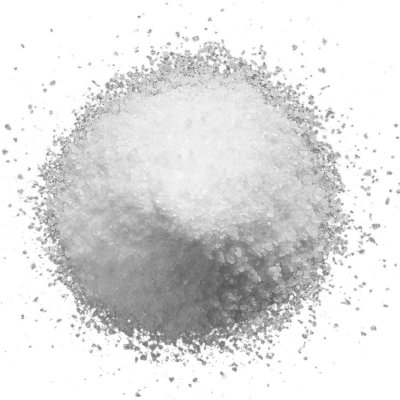The Duty of Defoamers in Enhancing Item High Quality and Performance
Defoamers serve as crucial additives that alleviate this concern, guaranteeing smoother manufacturing operations while boosting the useful and visual characteristics of the final items. The selection of the appropriate defoamer can be crucial to accomplishing optimum outcomes, raising essential concerns regarding solution compatibility and efficiency metrics that warrant more expedition.
Understanding Defoamers
Understanding the role of defoamers is important for keeping item top quality throughout numerous markets. Defoamers are chemical additives designed to stop the development and decrease of foam in liquid systems, which can adversely affect procedures such as mixing, filling up, and surface stress. Frothing can bring about inefficiencies, product defects, and compromised aesthetic charm, making defoamers a critical part in making operations.
In industrial applications, defoamers aid to boost item consistency and security. In the paint and finishings industry, foam can conflict with the application process and the last finish. In food and drink production, excessive foam can impede bottling and product packaging performance. The reliable use defoamers not only makes sure smoother manufacturing processes yet likewise adds to remarkable product performance.
Furthermore, the option and formula of a defoamer have to straighten with particular application needs, such as compatibility with other active ingredients, effectiveness under differing temperature and pH problems, and potential regulative restraints. Eventually, understanding defoamers' features and their relevance in various formulas is essential for optimizing manufacturing and guaranteeing the finest quality end items.
Kinds of Defoamers
Defoamers can be categorized right into numerous kinds based on their structure and system of activity. The primary types consist of silicone-based, non-silicone natural, and not natural defoamers.
Silicone-based defoamers are among one of the most reliable, mainly because of their capacity to spread swiftly on the fluid surface area and interfere with foam development. Their special chemical framework enables exceptional stability, making them appropriate for high-temperature applications and settings with differing pH levels.
Non-silicone organic defoamers, often composed of all-natural oils or fats, are valued for their biodegradability and reduced toxicity. These are usually used in food and beverage applications where safety and environmental impact are vital.
Not natural defoamers, that include substances like talc or calcium carbonate, act by boosting the thickness of the liquid, consequently lowering foam security. They are usually made use of in commercial procedures where compatibility with various other materials is not a worry.
Each sort of defoamer has unique benefits and restrictions, enabling tailored solutions depending on the particular foaming concerns run into in different applications. Comprehending these differences is important for enhancing performance and attaining preferred product quality.
Applications Across Industries
Countless markets utilize defoamers to improve item high quality and functional effectiveness. In the food and beverage sector, defoamers are essential in procedures such as brewing and dairy products production to stop foam development, which can result in inefficiencies and item variance. By managing foam, manufacturers can make certain much better return and an extra uniform item.
In the pharmaceutical market, defoamers play an essential function in the formulation of fluid medications, where extreme foam can impede blending and accurate application. Their use assists maintain the stability of the formulations and promotes smoother production procedures.
The paint and finishings industry additionally counts on defoamers to boost the performance of items throughout application. By reducing foam, these additives guarantee a smoother coating and enhance the aesthetic qualities of the last product.

Advantages of Utilizing Defoamers
While the application of defoamers differs throughout markets, their advantages constantly improve item high quality and process effectiveness. One considerable advantage is the decrease of foam formation during manufacturing processes, which can otherwise lead to manufacturing hold-ups and inconsistencies in item quality. By minimizing foam, defoamers make it possible for a smoother circulation of materials, facilitating extra reliable procedures and decreasing the likelihood of equipment malfunctions.
Additionally, the use of defoamers can enhance the appearance and texture of end products. In fields such as finishings, paints, and food processing, extreme foam can compromise the visual aesthetics and total top quality, while the ideal defoamer application makes certain a consistent coating and preferable attributes. Defoamers can contribute to cost financial savings by reducing waste throughout manufacturing and enhancing the use of raw materials.

Picking the Right Defoamer
Picking the ideal defoamer is essential for enhancing production processes and making sure item top quality. The selection of defoamer affects not only the efficiency of foam control yet likewise the general efficiency attributes of the final product. Elements to take into consideration include the kind of application, the chemistry of the solution, and the environmental problems under which the product will be made use of.
Various industries may require particular defoamer kinds, such as silicone-based, natural, or polymeric defoamers. Understanding the compatibility of the defoamer with the key ingredients is vital to stay clear of damaging reactions that might compromise item honesty. Furthermore, the defoamer's efficiency in different temperature levels and pH levels have to be examined to make certain constant efficiency.
Checking the defoamer in small applications can supply valuable understandings right into its efficiency and suitability. Consideration of governing conformity, specifically in food, drugs, and cosmetics, is vital in picking a defoamer. Ultimately, an extensive assessment of these factors will certainly result in the choice of a defoamer that not just regulates foam effectively but additionally improves the top quality and efficiency of the last product.
Verdict

Finally, defoamers are crucial ingredients that dramatically boost product quality and efficiency across numerous industries. By successfully reducing foam formation, these agents not just improve functional performance dig this but likewise add to the functional and visual honesty of items. The tactical option and application of defoamers lead to set you back savings, enhanced source use, and boosted customer complete satisfaction. Generally, the importance of defoamers in industrial processes weblink can not be overstated, as they play a vital role in achieving regular and premium outcomes.
Foaming can lead to inadequacies, product defects, and endangered visual appeal, making defoamers a vital component in making operations.
